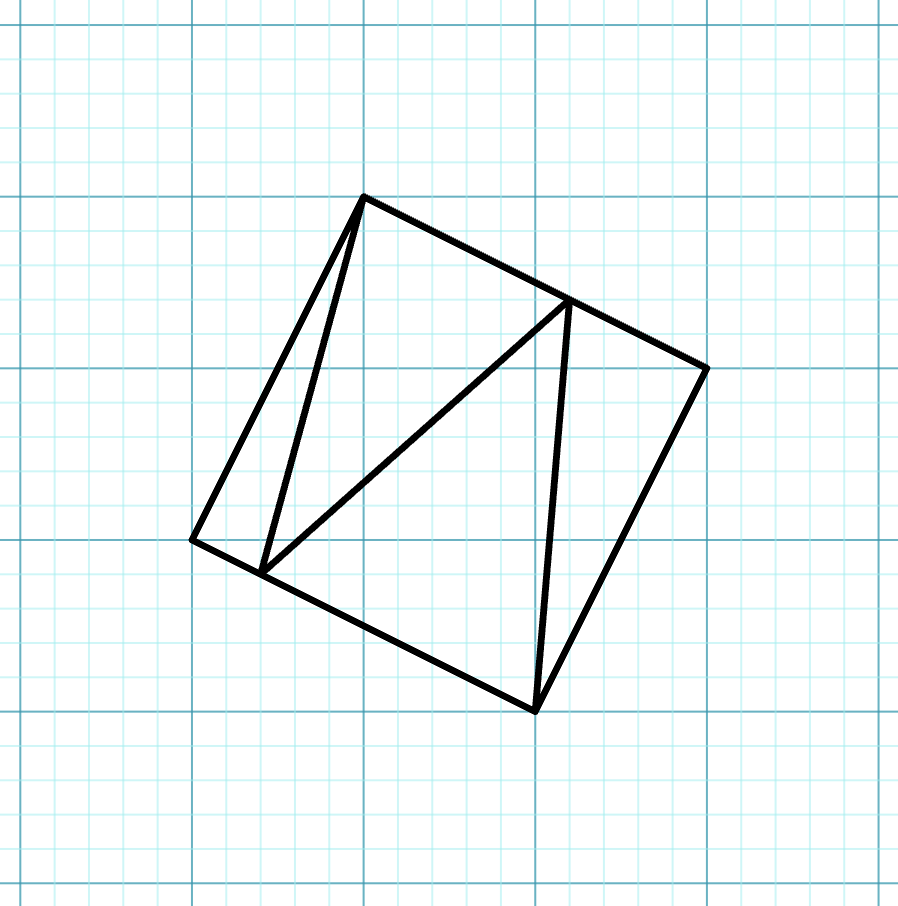5453.Square of Triangles
Time Limit: 3s Memory Limit: 256MBYou are given the squares of the lengths of the sides of four triangles. Determine if it is possible to arrange them (via translation, rotation, and reflection) into a square. No triangles may overlap, and there should be no gaps or holes.

Figure L.1: A solution to the third test case in the sample input.
Input Format(From the terminal/stdin)
The first line of input contains a single integer $t (1 ≤ t ≤ 20)$, which is the number of test cases.
Each of the next $4 · t$ lines describes $t$ test cases, consisting of four triangles each, one triangle per line. Each triangle consists of three integers $a, b$ and $c (1 ≤ a, b, c ≤ 10^7 )$. Each of the integers is equal to the square of the length of a side of a triangle. For example, if the three sides of a triangle have lengths $3, 4$ and $5$, then the input would be $9\ 16\ 25$. The integers will not necessarily be perfect squares. It is guaranteed that the given triples each represent a triangle of positive area.
Output Format(To the terminal/stdout)
Output $t$ lines. For each test case in order, output a single line with a single integer, which is 1 if the four triangles of the test case can be arranged into a square, and 0 otherwise.
Sample Input
3 1 1 2 2 1 1 2 1 1 1 2 1 1 1 1 1 1 1 1 1 1 1 1 1 5 125 130 125 20 145 45 130 145 145 145 80\n · · \n · · \n · · \n · · \n · · \n · · \n · · \n · · \n · · \n · · \n · · \n · · \n
Sample Output
1 0 1\n \n \n